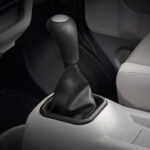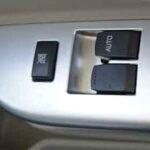Types of Car Battery
Here is an overview of the five main types of batteries you can purchase for your car.
Starting, Lighting, and Ignition
Starting, lighting, and ignition (SLI) batteries are the most common type of batteries. They not only start your car, but also provide power to your lights, radio, ignition, fuel pump and more. However, they only provide power in quick bursts, like the few seconds it takes to start your car.
Deep Cycle
Deep cycle batteries provide power over a longer period of time. They’re used for other vehicles in addition to cars, like golf carts or marine vehicles.
Lithium-Ion
This type of battery is common in hybrid and electric cars. They are lightweight and store a lot of energy. However, they have a shorter lifespan than other car batteries.
Buying A Car Battery: Factors to Consider
In addition to the type, you’ll want to consider these factors when buying an auto battery.
Fit
Your car battery needs to properly fit in the tray designed for the battery. This means having the right length, width, and height and the right terminal locations. You can consult your owner’s manual or mechanic if you’re unsure about battery size and fit.
Power Requirement
Your car has certain cranking power requirements to get it started. You can find these numbers in the owner’s manual.
Cranking Amps
Cranking amps (CA) measures your car’s starting power at 32 degrees Fahrenheit.
Cold Cranking Amps
Cold-cranking amps (CCA) measures your car’s starting power at 0 degrees Fahrenheit. This number is especially important if you live in a place with cold weather.
Car Battery Maintenance
Car batteries are typically low maintenance if you need to add liquid to them or maintenance-free. If you don’t want to worry about maintaining your battery, we recommend getting a sealed one.
Freshness
Car batteries lose strength over time even when they’re not being used, so don’t purchase a battery that is older than six months from the manufacturing date. Most batteries have a code on them that tells you when the battery was manufactured. Letters represent months, and numbers represent years, so A/8 would be January 2018.
How do I install a car battery?
The best way to ensure your battery is properly installed is to have a mechanic do it. However, if you want to do it yourself, follow these steps:
- Turn off the engine
- Check your owner’s manual to locate the battery
- Remove the negative cable (black in color) from the battery using a wrench
- Do the same with the positive cable (red in color)
- Use the wrench to remove the battery clamp
- Lift the battery off of its tray using both hands
- Clean any corrosion you find with a battery cleaning solution or baking soda and water mixture
- Place the new battery in the tray so that the positive post matches the positive terminal and the negative post matches the negative terminal
- Secure the battery clamp
- Remove the plastic caps that cover the posts and spray them with an anti-corrosion solution
- Attach and tighten the positive cable to the positive terminal
- Do the same with the negative cable
- Wiggle the battery; if it moves, tighten the clamp more
How do I know when my car battery is dying?
Here are some common symptoms of a dying car battery:
- You have already jumped the battery more than once in the past
- The engine cranks but doesn’t start
- The headlights and radio won’t turn on

























[…] Car batteries are not designed for long-term power use. They’re designed to provide your vehicle with enough electrical oomph to start by juicing the starter motor with a surge of power and getting the whole works spinning. In other words, a bad alternator can get your attention by killing your car’s battery, even if the battery wasn’t the problem, to begin with. […]
[…] deck serves as ideal platform to load all types of […]